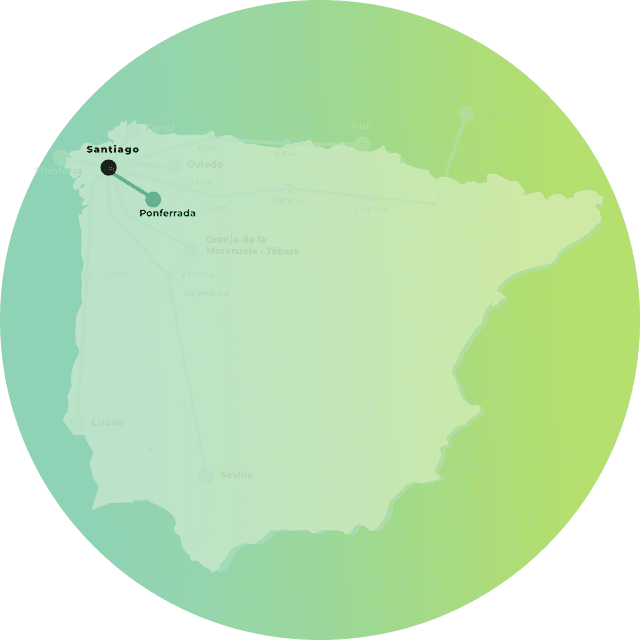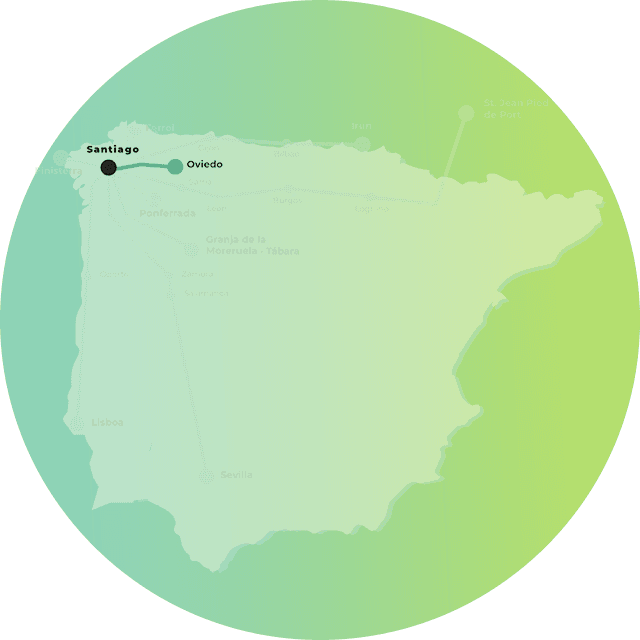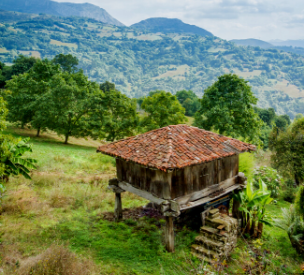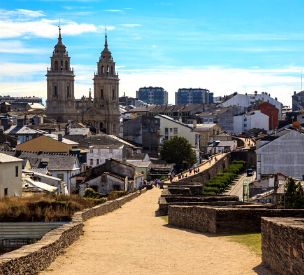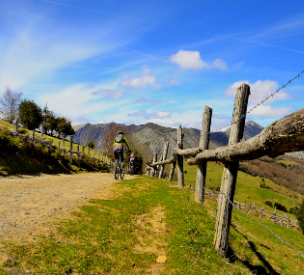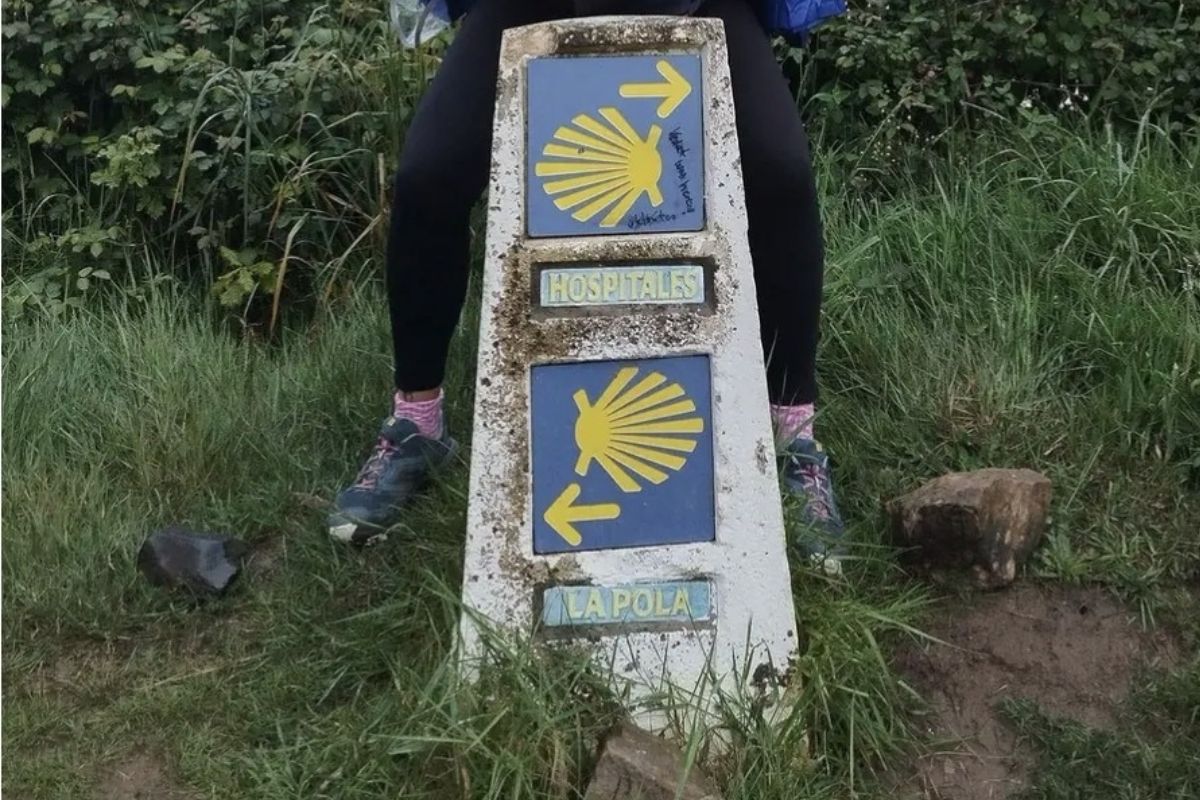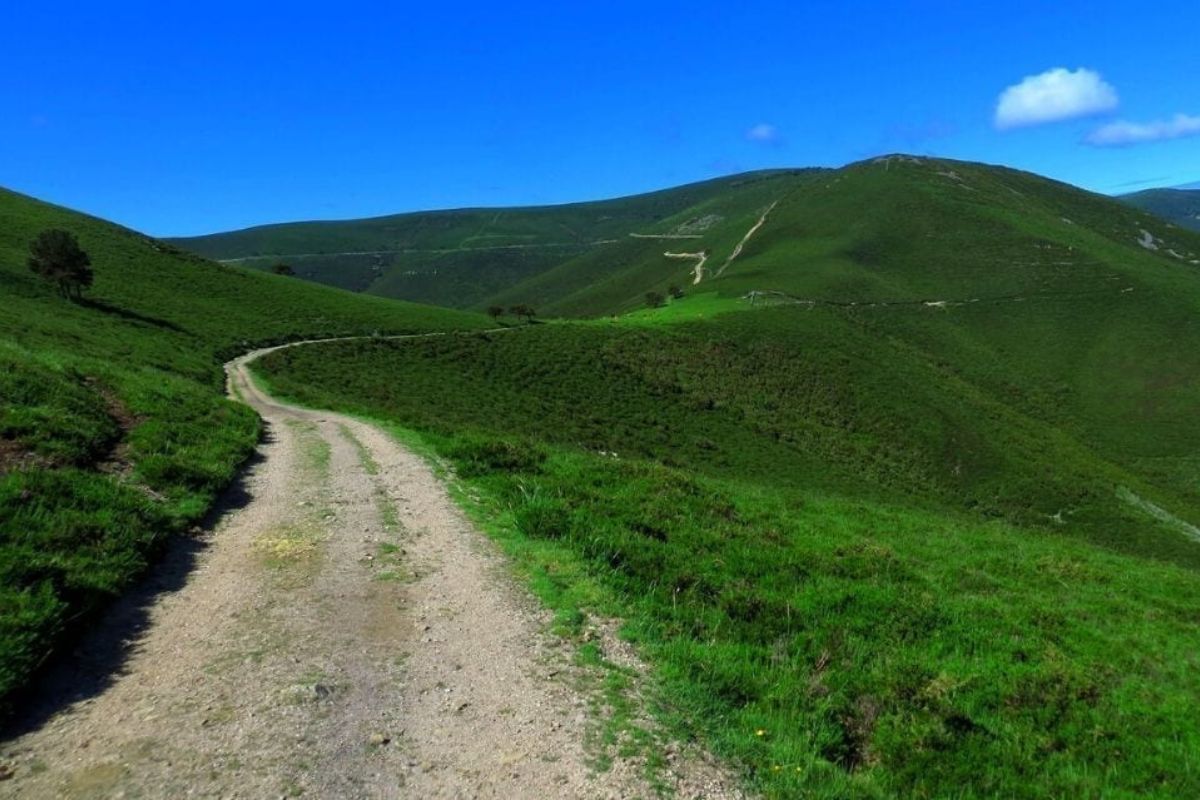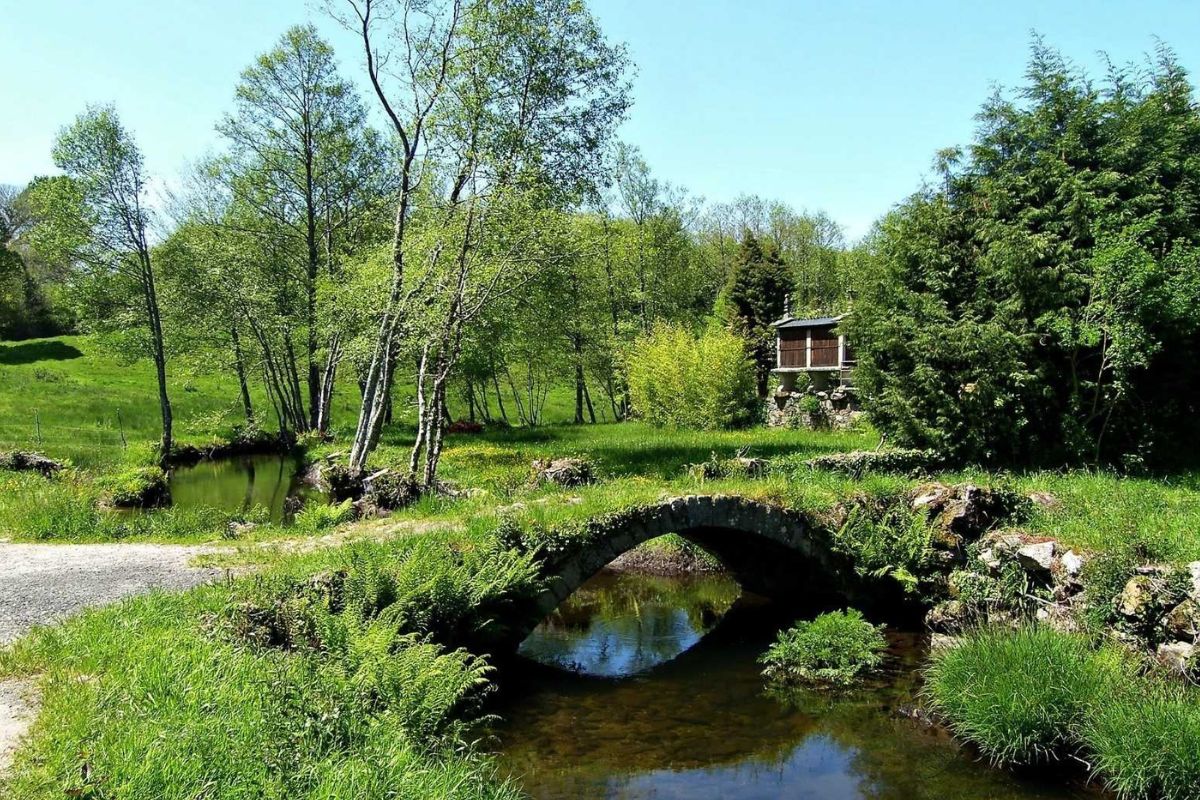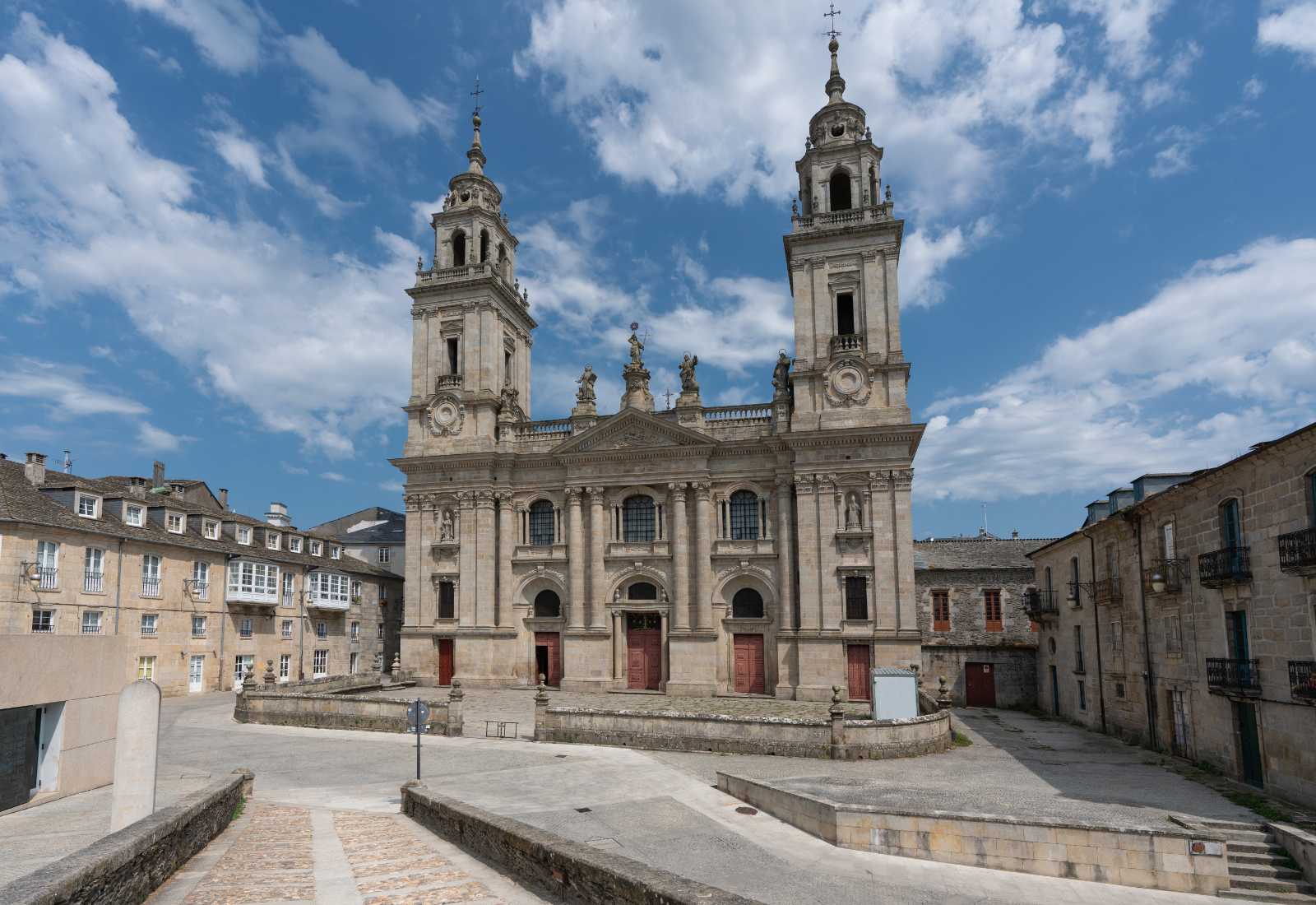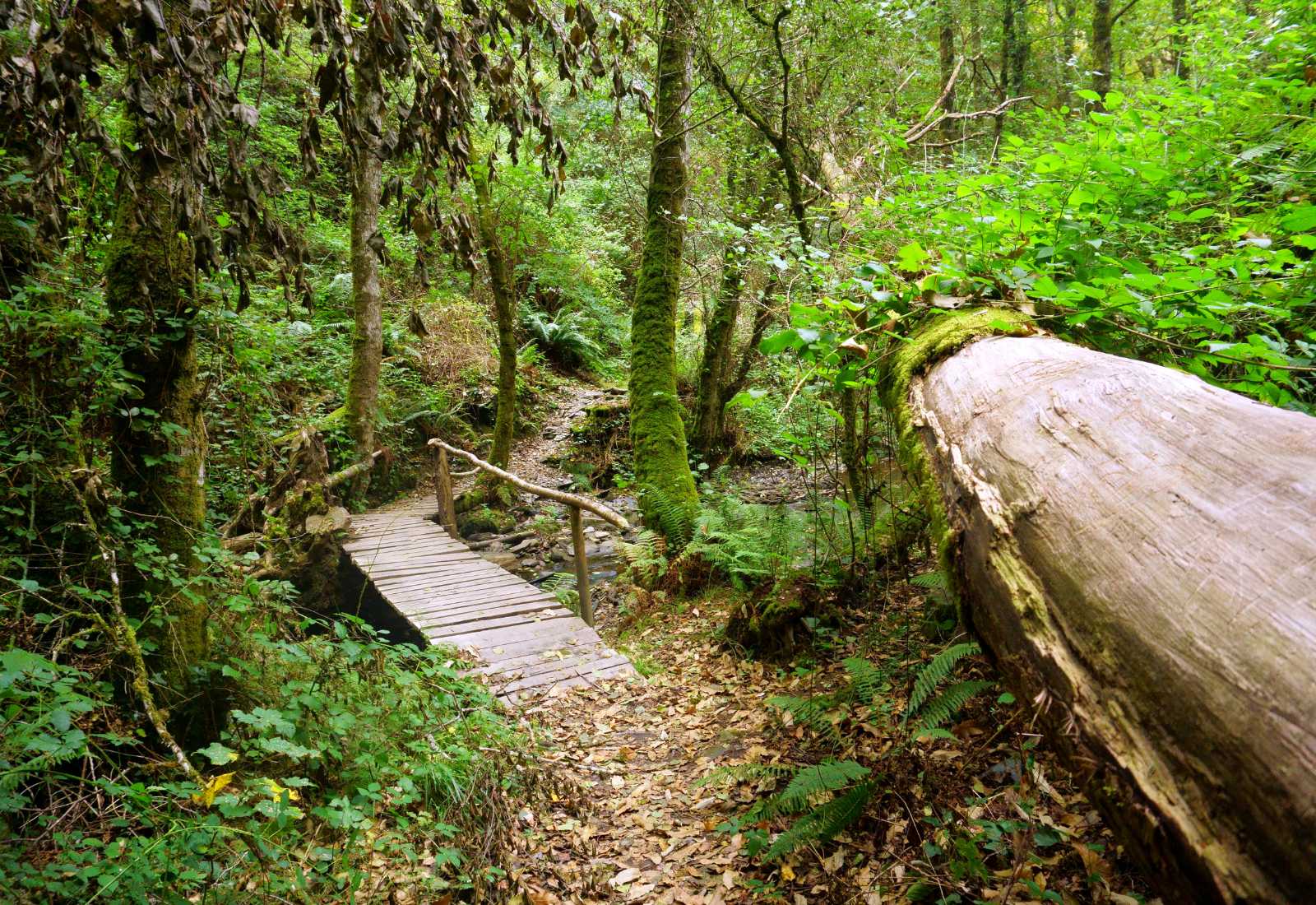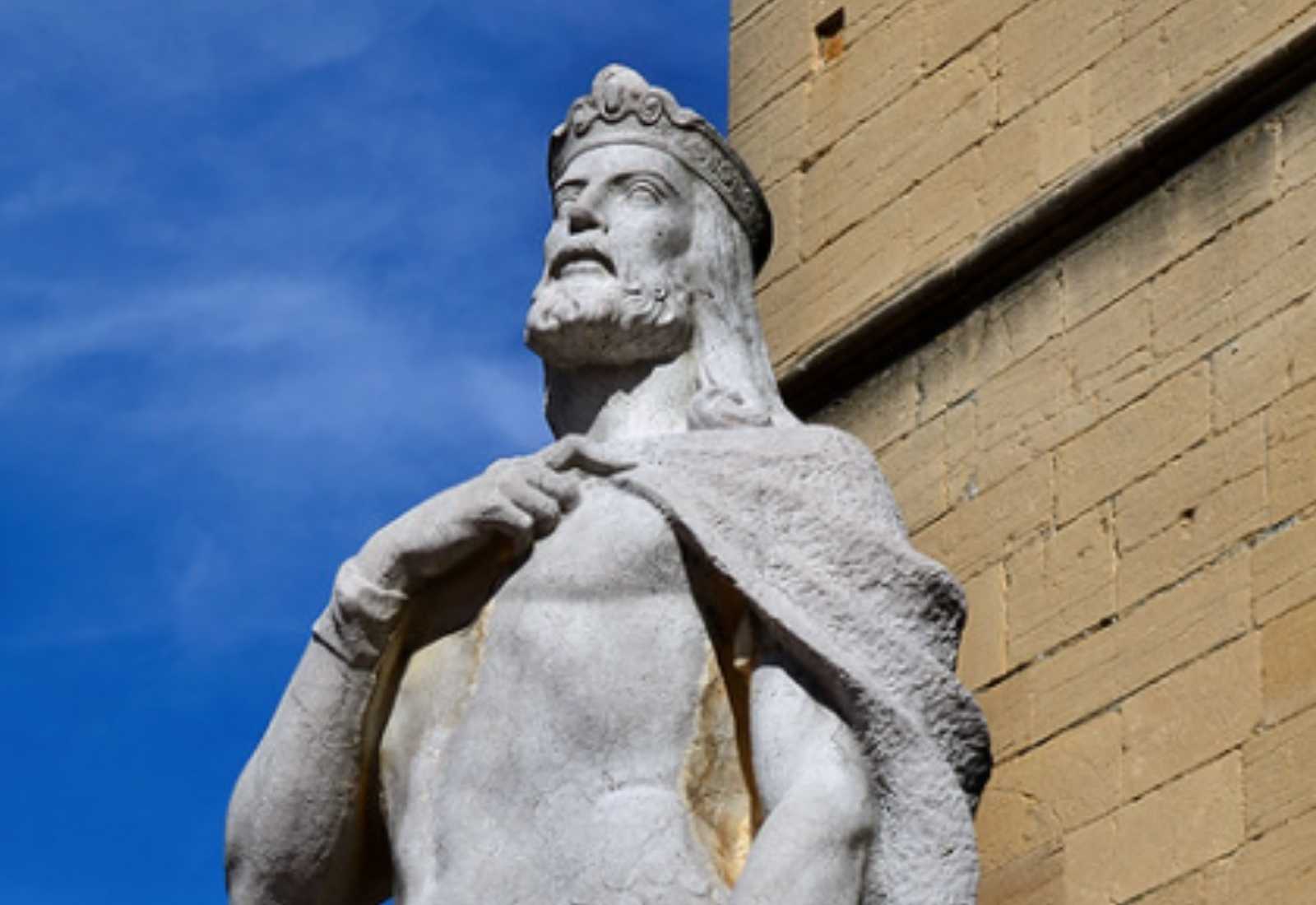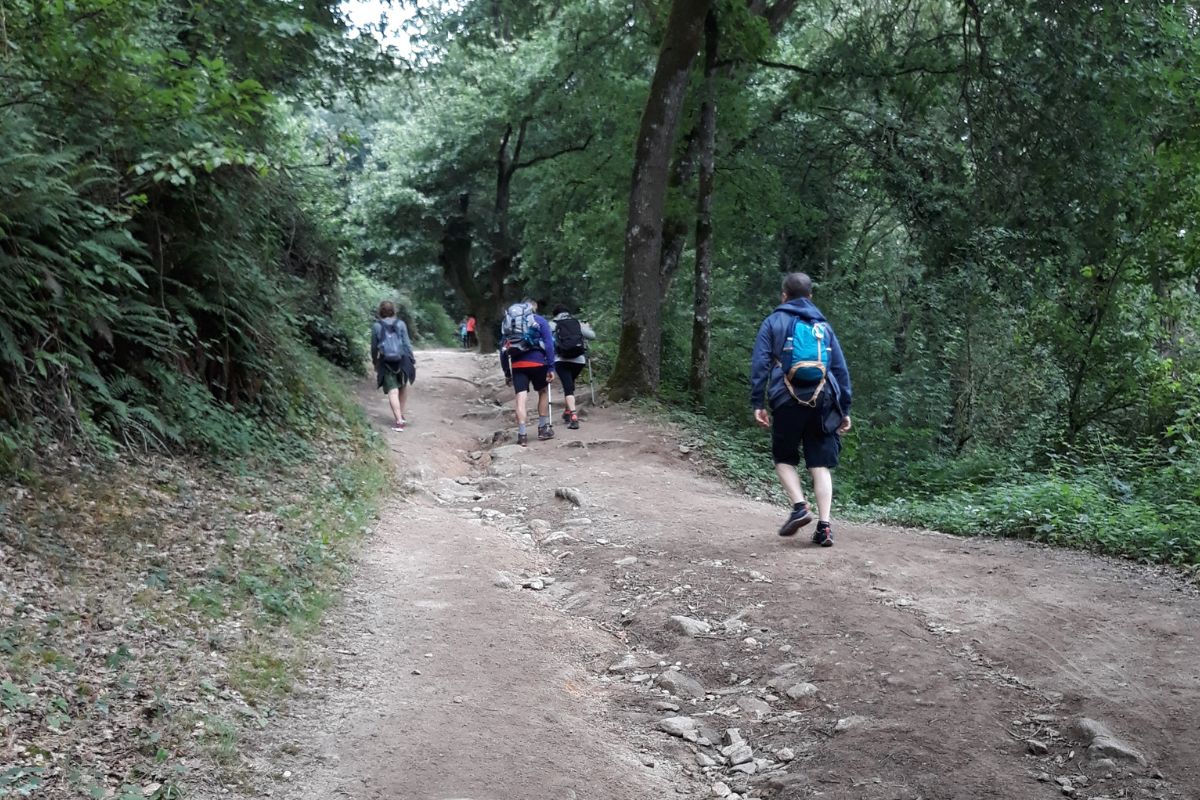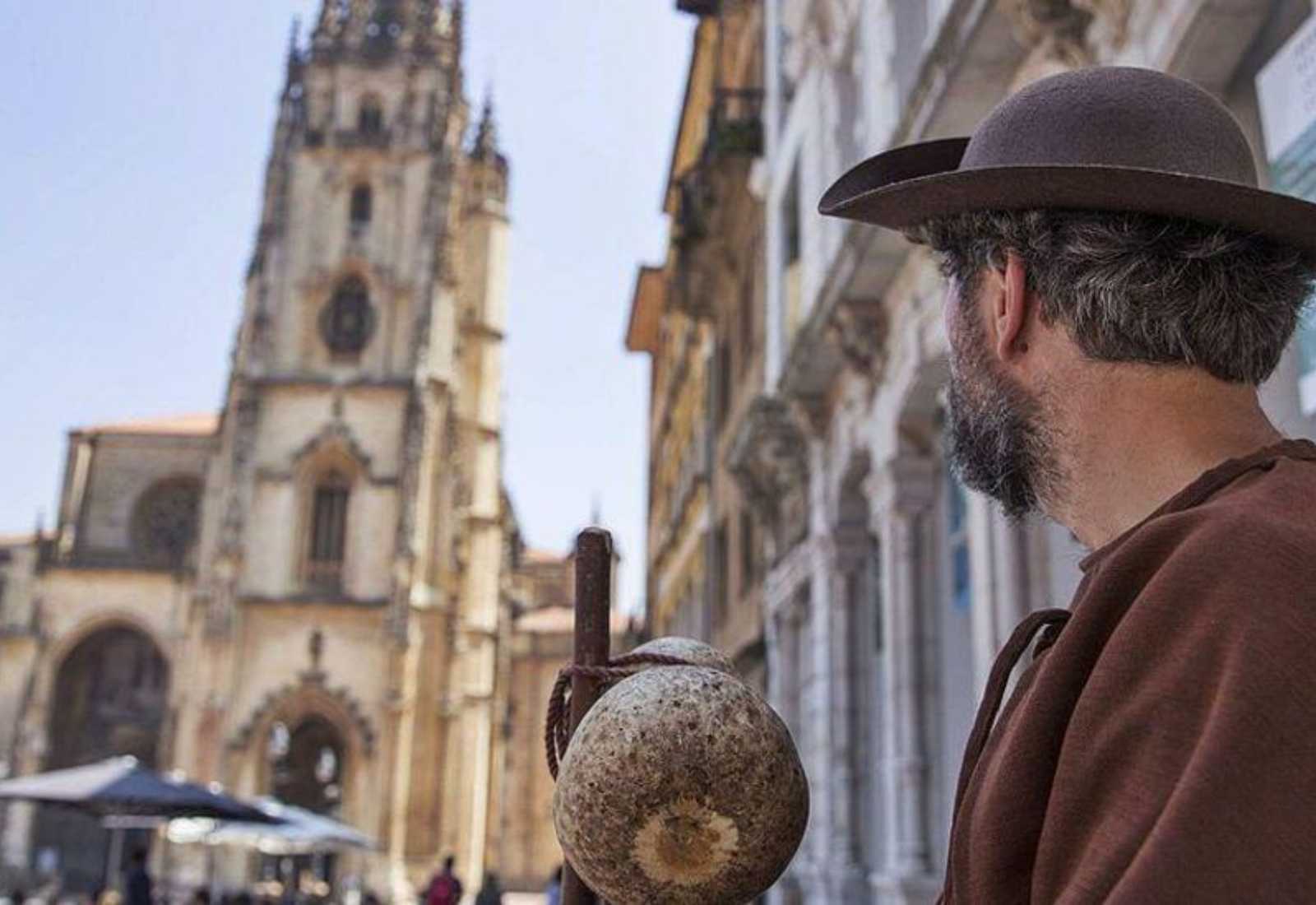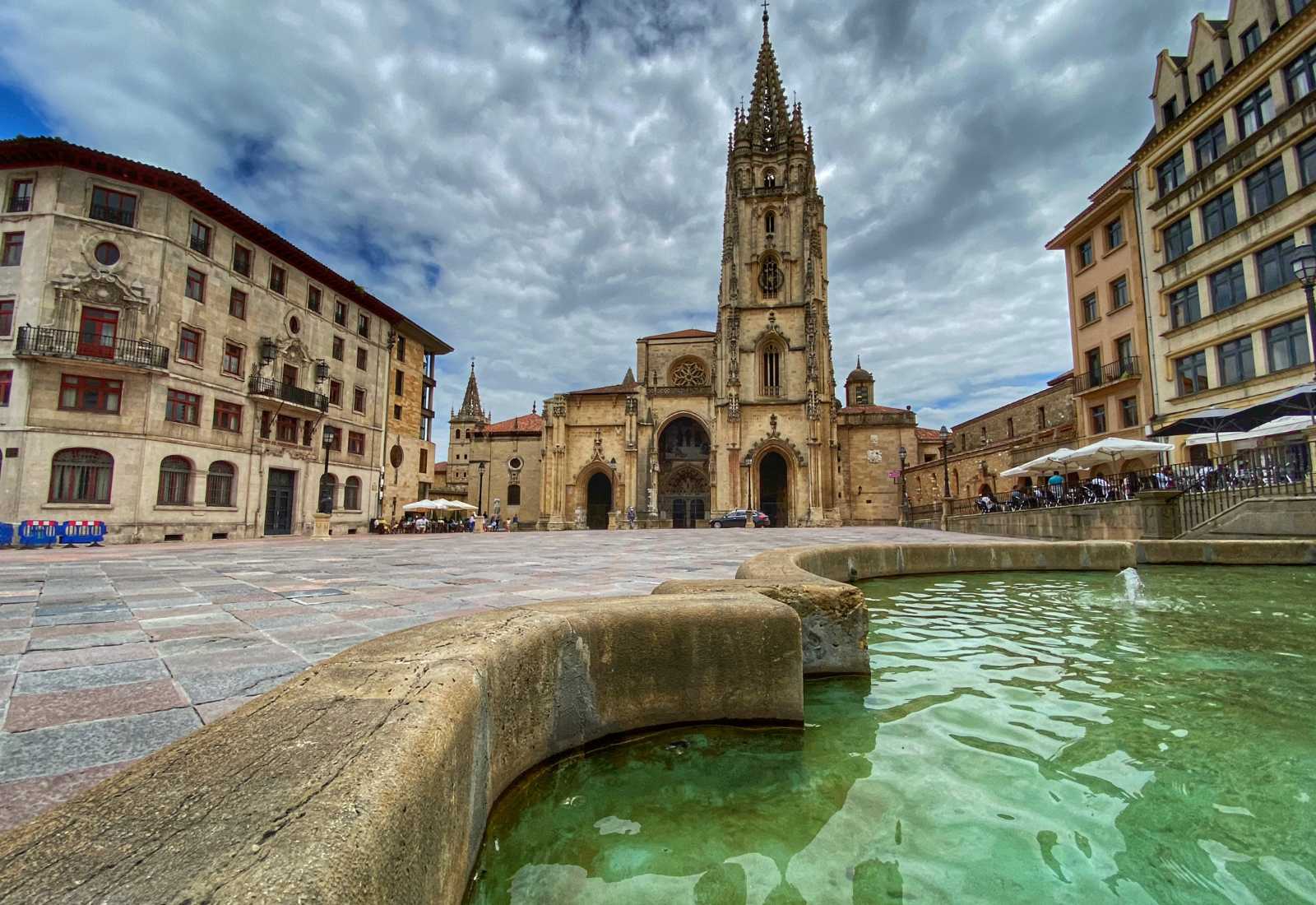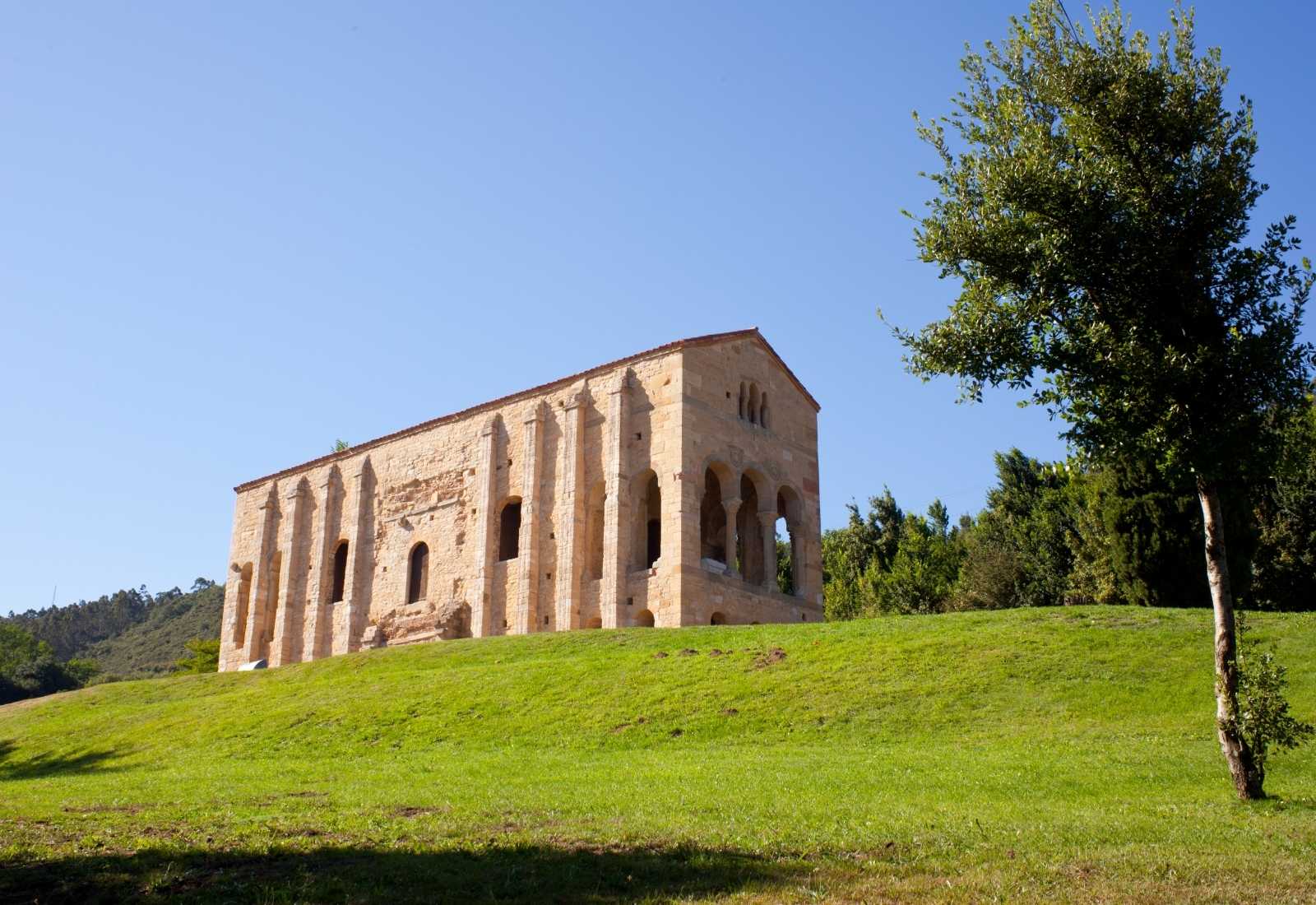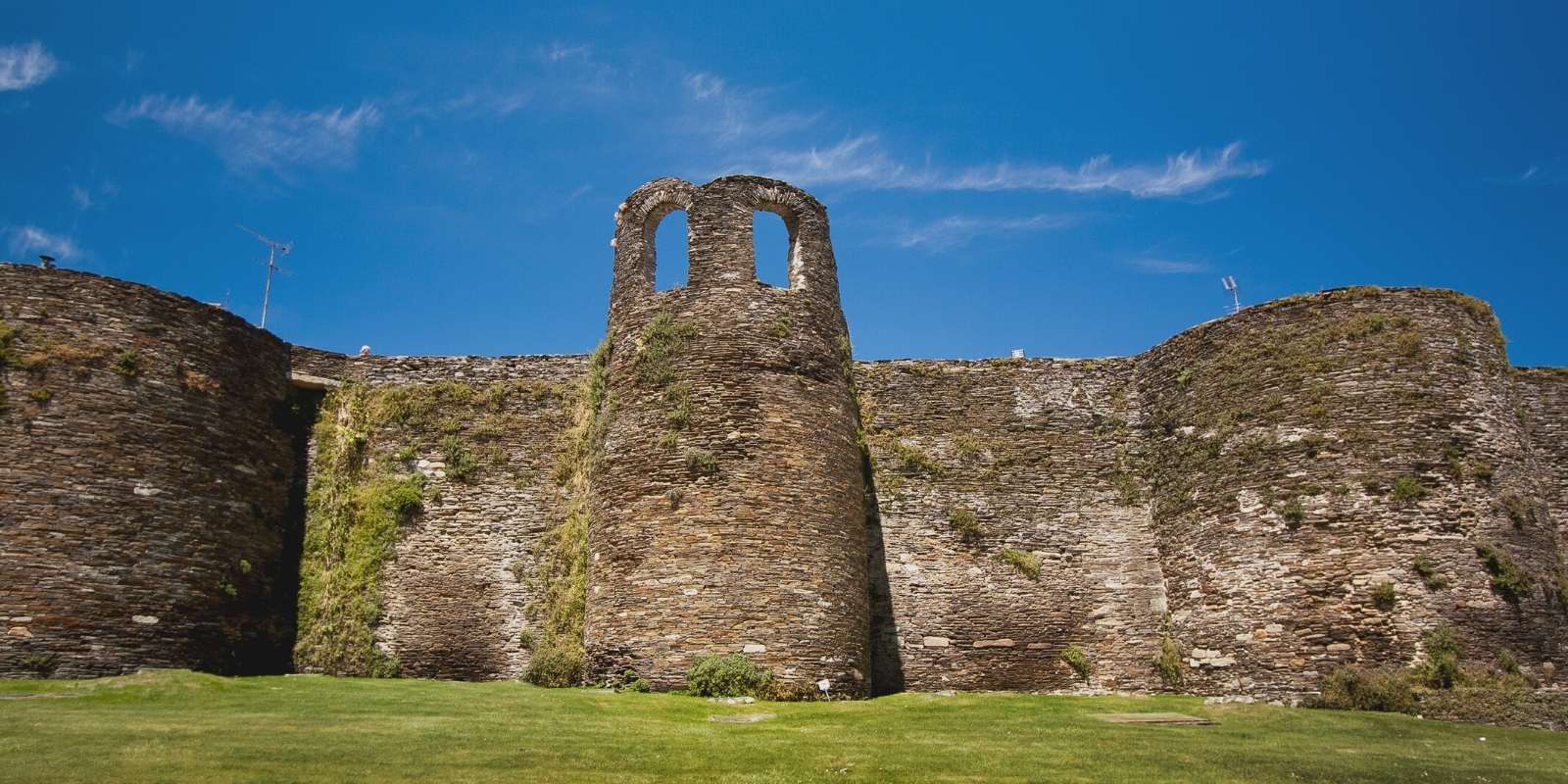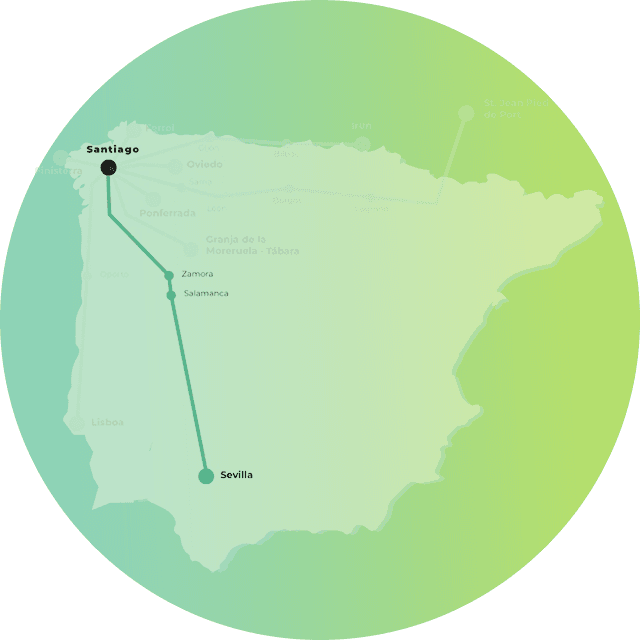The Primitive Way of St. James
The essence of pilgrimage in its purest form.
Of all the routes, this is considered the most authentic and scenically rich of all the Camino de Santiago trails. It is a deeply intimate and solitary route that revives the Jacobean spirit of the earliest pilgrimages.
The Primitive Way of St. James is a journey to the origins of the pilgrimage to Santiago, as well as an opportunity to disconnect from the world and immerse oneself in a myriad of silent landscapes rooted in the deepest rural traditions.
Services we offer on the Primitive Way to Santiago
Included in all our routes
- Accommodation booking selecting the best lodgings according to your budget.
- Luggage transport between stages.
- Practical information about the Camino in a detailed guide.
- Phone assistance en route we’re by your side for any questions or incidents.
- Travel insurance with broad coverage.
On group tours
- Accompanying guides professional support throughout the Camino.
- Support vehicle available during the stages.
Optional services
- Meals and diets: option to add breakfasts or half board.
- Private transfers to/from the point you need.
- Bicycle rental (mountain or electric bikes).
Map of the Primitive Way
The map shows the complete route of the Primitive Way of St. James, from Oviedo in Asturias to Santiago de Compostela in Galicia, Spain. This historic pilgrimage route, considered the oldest of the Camino de Santiago, spans approximately 320 km and crosses spectacular landscapes and significant towns such as Grado, Tineo, Pola de Allande, Grandas de Salime, and Lugo.
At the bottom, the elevation profile of the route is depicted, highlighting the steep inclines and mountainous areas characteristic of this path, such as the ascent to Puerto del Palo and the crossing of Alto del Acebo. Each stage offers a unique experience, with breathtaking views, unspoiled nature, and a rich cultural and architectural heritage, making it an unforgettable spiritual and physical challenge.
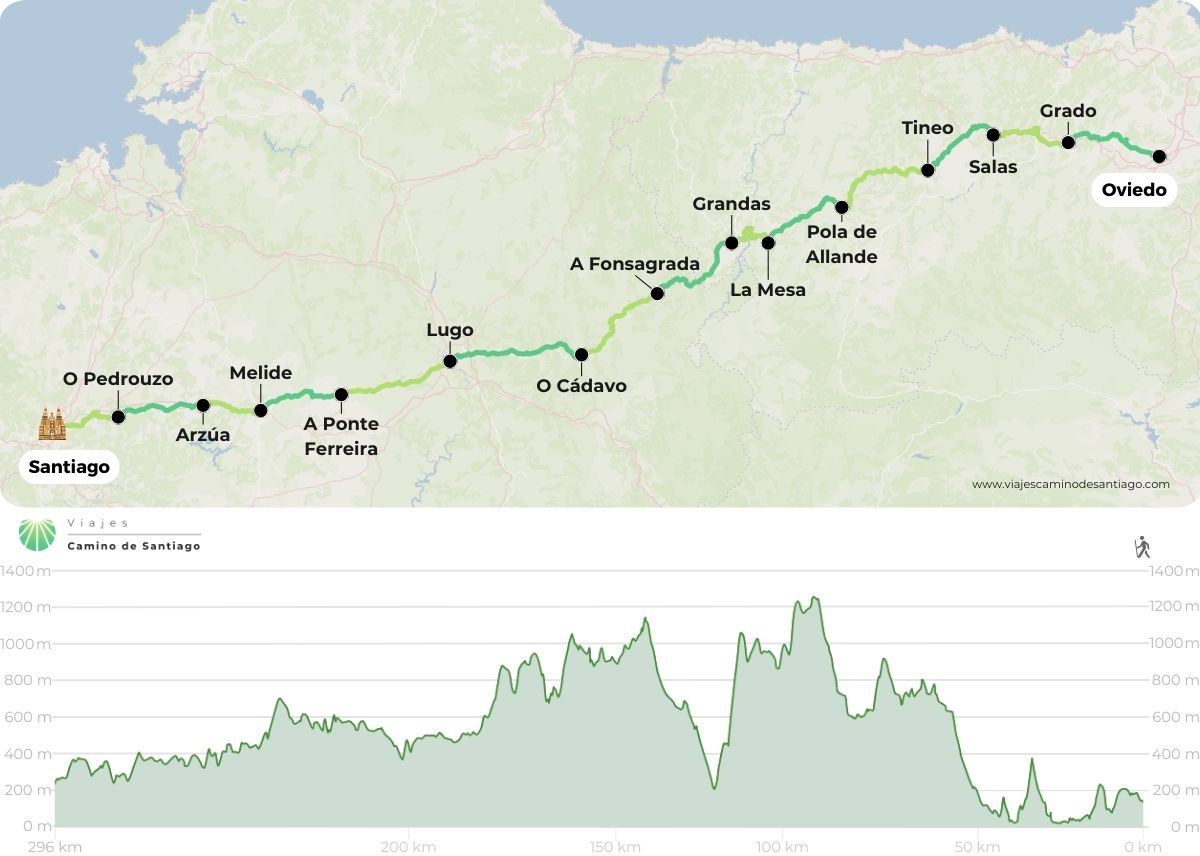
Information about the Primitive Way of St. James
Why Choose the Primitive Way?
The first of all the Jacobean routes in history.
The Primitive Way starts from the city of Oviedo and runs through the western interior of Asturias, one of the least known areas of the region, whose stunning beauty will leave no walker indifferent. You will enter Galicia through Alto do Acevo, at over 1,000 meters in altitude, reaching the walled city of Lugo and continuing your journey to Melide, where the Primitive Way joins the French Way, sharing three stages until Santiago de Compostela.
However, be warned, if you’re planning to walk the Camino de Santiago on its Primitive route, you should know it is no easy stroll. It has extremely demanding stages and significant elevation changes, with few services available along the way. For this reason, it’s not recommended for beginners or those who are not in good physical condition. Its difficulty intensifies especially in the colder months, when abundant rainfall turns some sections of the trail into real mud pits, making it less advisable for cycling.
What to See and Do on the Primitive Way of St. James?
The history of the origin of the Camino among the mountains.
Where to Start the Primitive Way?
From Oviedo
The Primitive Way begins in Oviedo, the capital of the Principality of Asturias, and like almost all Jacobean routes, its destination is Santiago de Compostela. These two cities are separated by a total of 320 kilometers, with just over half of the route passing through Galicia. The Primitive Way from Oviedo to Lugo is typically divided into 14 stages, ranging from 20 to 30 kilometers, and to complete it fully, you’ll need at least 15 days. Another great option is to do the Primitive Way by bike from Oviedo, which will surely delight cycling enthusiasts.
From Lugo
As mentioned earlier, this route is quite different from other Camino paths. The Asturian section is especially tough, and its steep inclines, we emphasize, will challenge many pilgrims. However, as you may already know, it is not necessary to complete the entire Primitive Way. You can start from any point depending on the number of days you have and your physical capacity. If you decide not to do the full route, the city of Lugo is the perfect place to begin your journey. The Primitive Way from Lugo is about 102 kilometers to Santiago, divided into 5 comfortable stages with no major difficulties, suitable for anyone.
Stages of the Primitive Camino de Santiago
The Camino Primitivo is the oldest and most authentic Jacobean route, full of history, spirituality, and stunning landscapes. Along its approximately 320 kilometers, from Oviedo to Santiago de Compostela, it passes through various stages that cross mountains, lush forests, and charming villages. Each section offers a unique experience, from the challenging ascents in the Asturian mountains to the green and rolling Galician landscapes. Through these links, you will discover the main stages, their distances, points of interest, and practical tips to make the most of this unforgettable adventure.
Keep in mind that upon reaching Melide, the Camino Primitivo joins the Camino Francés, so you will continue the final stages of this iconic route until reaching Santiago de Compostela.
The Villages of the Primitive Way of St. James
History of the Primitive Route
The history of the Primitive Way of St. James is the origin of the history of the Camino de Santiago.
The Roots of the Camino de Santiago
The Primitive Way gets its name because it is considered the oldest pilgrimage route to Santiago. Its origin is so ancient that it falls within a period where legend and history merge, making it nearly impossible to distinguish between them.
The story of this ancient route begins with the discovery of the tomb of the Apostle St. James in the year 830. At that time, King Alfonso II, also known as the Chaste, ruled Asturias. Asturias was impregnable to Muslim invaders due to important military victories, and its territorial dominance extended into what is now Galicia and Castilla y León. Upon hearing the news coming from Compostela, the monarch immediately departed from his seat in Oviedo to venerate the saint’s relics. In the 9th century, King Alfonso II was declared the first pilgrim in the history of the Camino de Santiago.
After this first pilgrimage, successors like King Alfonso III the Great followed suit and reached Santiago de Compostela, granting new privileges to the sanctuary.
In 910, the capital of the Kingdom of Oviedo was moved to León. The Cathedral of Oviedo suffered a major setback, which was further accentuated by the consolidation of the French Way through León. However, pilgrims arriving from the Pyrenees discovered the detour from the French Way to the Cathedral of Oviedo. At that time, both the Cathedral of the Savior and the Cathedral of Lugo held great spiritual significance, so many pilgrims chose to divert. Among pilgrims, there was a well-known saying: “Whoever goes to Santiago and not to the Savior, visits the servant but not the Lord.”
Subsequent Development
Over the centuries, the Primitive Way lost its prominence but never stopped having pilgrims. In the 19th century, the decline was nearly total, just like in the other Jacobean routes.
However, starting in the 20th century, the Camino de Santiago experienced a major revival, and all the routes began to come to life again. Thanks to renewed interest from administrations and associations, a significant effort was made to promote and improve the Asturian paths, the routes were marked, guides were published, hostels were built, and services for pilgrims increased considerably.
More than a millennium after the first journey of the King of Asturias, the Primitive Way remains a magnificent option for those pilgrims seeking an alternative away from the crowds and the tourist atmosphere of other routes.
Frequently asked questions about the Primitive Way
The best time to do the Primitive Way is between spring and autumn. During these months, the climate is milder and more pleasant, avoiding the intense cold of winter. In winter it is likely to find rain and, given the altitude of some mountain levels, snow, so the cold season is not recommended.
The Primitive Way and the French Way meet in the town of Melide, in the province of Lugo, Galicia. Melide is a key point on the route to Santiago de Compostela, where pilgrims who have followed the historic Camino Primitivo join the main route of the Camino Frances.
The Primitive Way is one of the oldest routes of the Camino de Santiago, and with about 320 km, generally, there are a total of 14 stages. Therefore, divided like this, it takes 14 days to complete the Camino de Santiago Primitivo on foot.
Each stage would be the distance you travel in one day, from the starting location to the end of the walk, where you will spend the night. The stages can vary in distance and difficulty, and it is important to note that they can be adjusted according to your pace and physical condition. Some pilgrims choose to divide certain long or difficult stages, or lengthen those that are shorter or easier to walk. It all depends on having a place to sleep.
The total kilometers of the Camino Primitivo are about 320 km from Oviedo. It must be taken into account that this distance may vary depending on the possible variants or complementary and alternative paths that the pilgrim decides to take during the route.
The Primitive Way is divided into 14 stages. It begins in Oviedo and has 320 kilometers to go to Santiago de Compostela. It must be taken into account that this distance may vary depending on the possible variants or complementary and alternative paths that the pilgrim decides to take during the route.
Each stage would be the distance you travel in one day, from the starting location to the end of the walk, where you will spend the night. The stages can vary in distance and difficulty, and it is important to note that they can be adjusted according to your pace and physical condition. Some pilgrims choose to divide certain long or difficult stages, or lengthen those that are shorter or easier to walk. It all depends on having a place to sleep.
Posts related to the Primitive Way
Other routes of the Camino de Santiago
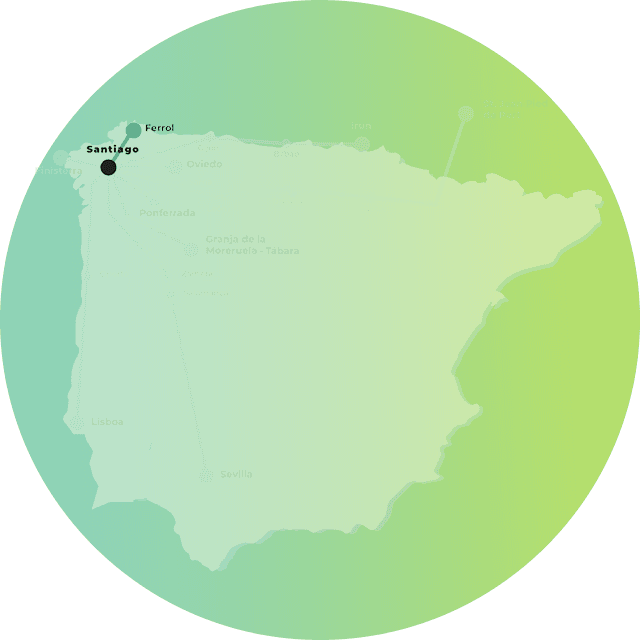
English Way
From Ferrol to Santiago de Compostela. Delve into the culture of villages of great military, naval and historical importance. 5 Etapas | 125 km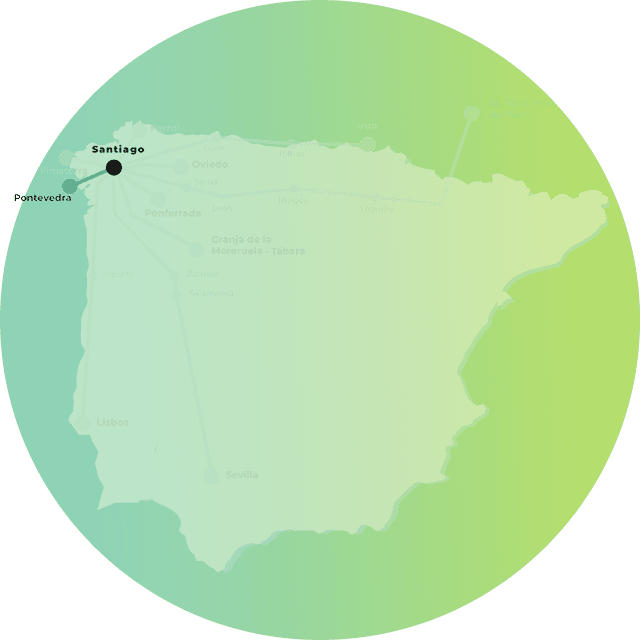
Father Sarmiento Way
The Father Sarmiento Way links Pontevedra to Santiago de Compostela, offering a scenic journey through beautiful landscapes. 6 stages | 142 km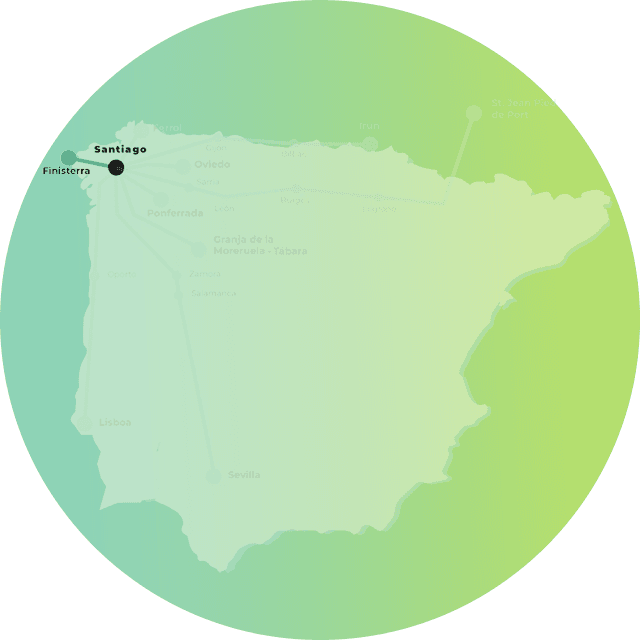
Finisterre and Muxía Way
From Santiago de Compostela to Muxía. A mystical and spiritual journey to the ends of the Earth 5 stages | 120 km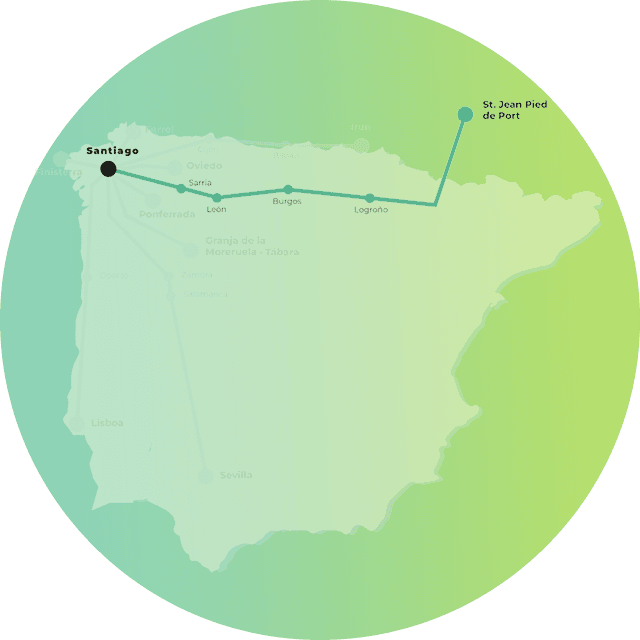
French Way
From Saint-Jean-Pied-de-Port to Santiago, trace Charlemagne’s path through the Pyrenees and trek 800 km on the French Way. 33 stages | 768 km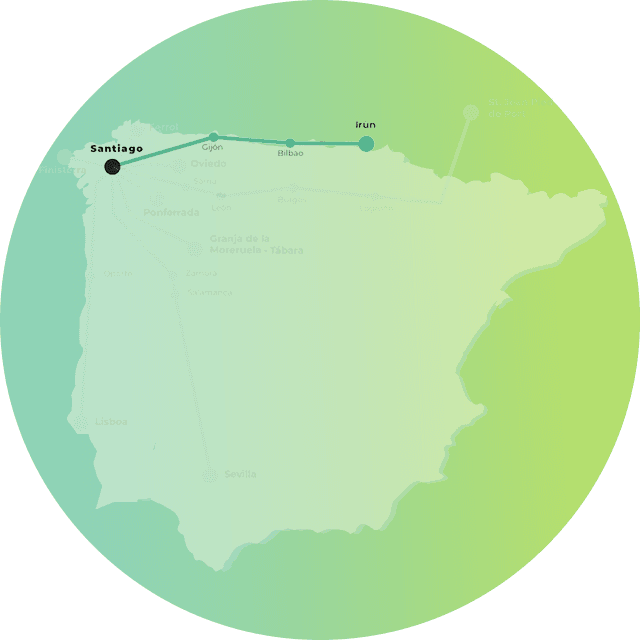
Northern Way
From Santiago de Compostela to Muxía. An unforgettable experience with breathtaking scenery 34 Stages | 820 km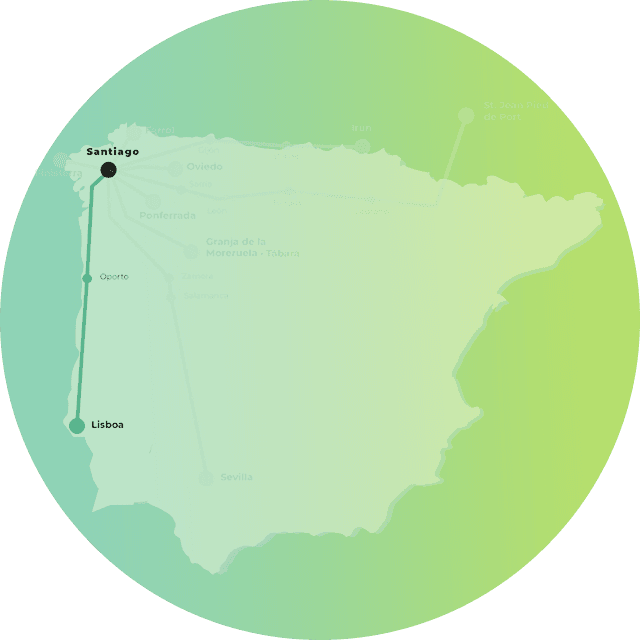
Portuguese Way
Starts in Lisbon and leads to Santiago de Compostela, offering a scenic journey through charming towns, coastal views, and culture. 27 stages | 620 km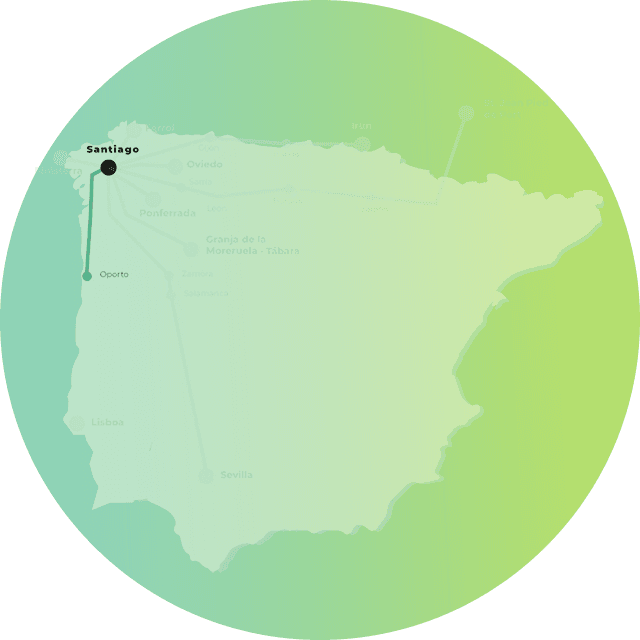
Portuguese Way along the coast
From Oporto to Santiago de Compostela. Total 194 km - 8 stages 8 Stages | 194 km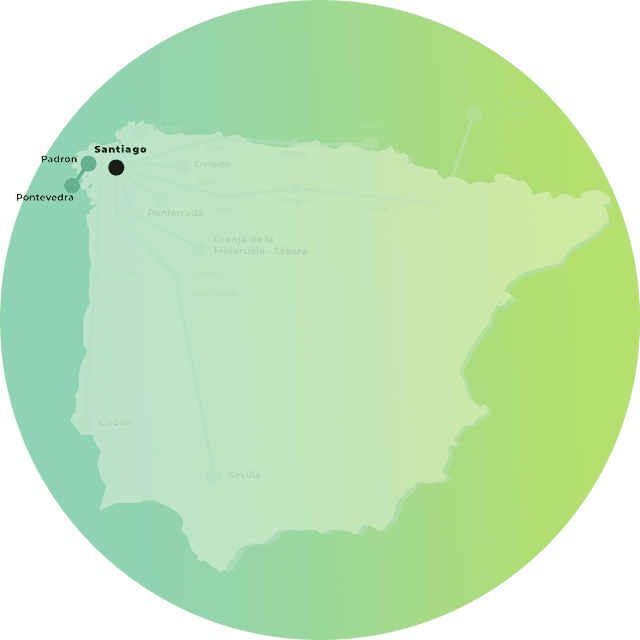
Portuguese Way: spiritual variant
From Pontevedra to Padrón. Total 81 km - 3 stages 3 stages | 81 km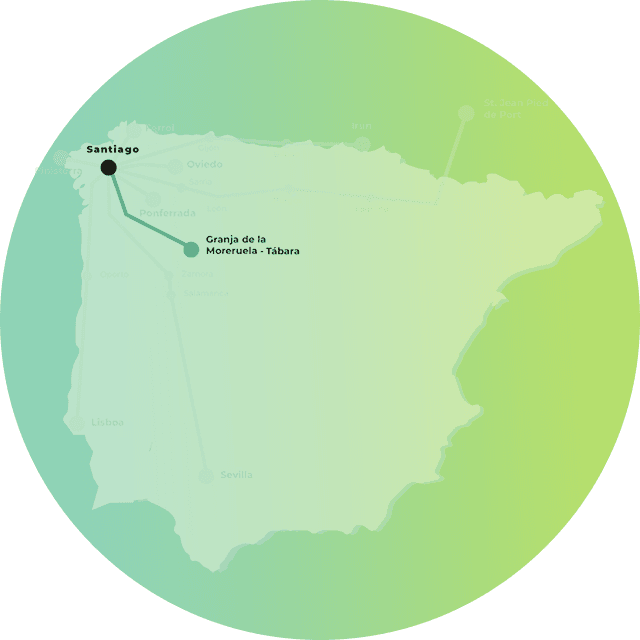
Sanabrian Way
From Granja de Moreruela to Santiago de Compostela. Total 365 km - 13 stages 13 stages | 365 km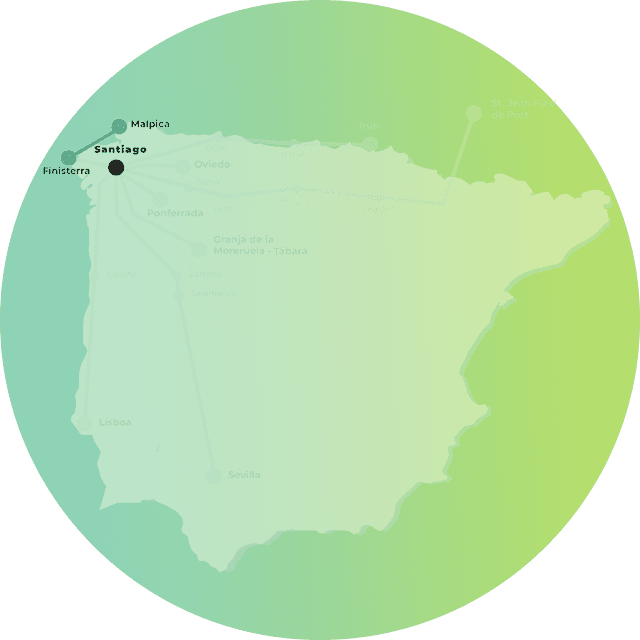
Way of the Lighthouses
From Malpica to Finisterre. A 200-kilometer journey along the coast and through the wildest of nature 8 stages | 195 km